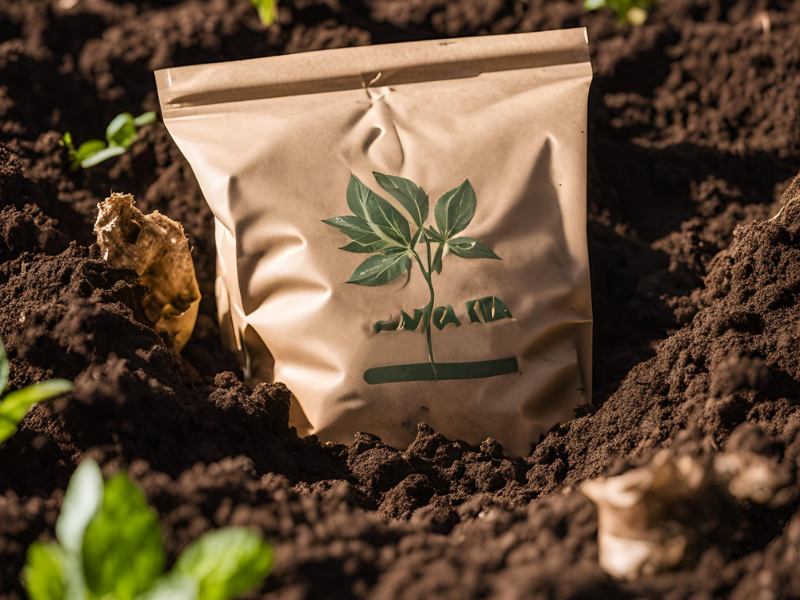Demand accelerates for sustainable compostable and biodegradable plastic in packaging, new Smithers research finds
(Leatherhead, Surrey, UK) October 30, 2024 – Worth $2.56 billion in 2024, packaging manufacturers and users are increasing demand for a new generation of polymers that are also biodegradable or compostable. This transition is being powered by consumer preference, brand owners’ corporate citizenship commitments, and a suite of new regulatory requirements.
A dedicated new study from Smithers –
The Future of Biodegradable and Compostable Packaging to 2029 – forecasts sales value will increase at a +9.1% compound annual growth rate (CAGR) across the next five years, more than double the rate for standard polymer types. This will push total market value to $4.0 billion in 2029, at constant pricing.
This potential is already fueling increased R&D spending for a host of bio-based and conventional polymers – including polylactic acid (PLA), aliphatic-aromatic copolyesters, starch/starch blend plastics, cellulose acetate, and polyhydroxyalkanoates (PHAs). As the market evolves further work will be needed to balance material strength with biodegradability performance in commercial grades and blends; as well as improving product quality and consistency.
Total consumption of these in packaging across the Smithers forecast period will increase from a projected 770,000 tons (metric) in 2024 to 1.17 million tons in 2029.
While polymer recycling is the plastic industry’s principal response to calls for more sustainable packaging, compostable and biodegradable grades have an important role to play, especially for those formats that cannot be collected or recycled cost-effectively.
The largest market in packaging is for the bioplastic PLA. This has already debuted in several rigid plastic formats; and is now being supplemented by more flexible PLA grades and a family of recycled PLA grades produced from chemically recycled feedstocks. Contemporary PLA grades only experience accelerated degradation under controlled conditions in industrial composting. Thus, the main R&D goal is to enhance this for ambient conditions, via additives and co-polymer blending.
For the second largest segment, aliphatic-aromatic copolyesters, new additives are being developed to improve the strength of polybutylene succinate (PBS).
Starch and thermoplastic starch blends for extrusion coating and lamination are growing in popularity, leveraging recent advances that allow these to be manufactured from carbohydrates or another 100% bio-based feedstock.
The market appeal of biodegradable or compostable plastics is biased heavily towards certain formats and segments, and in turn has been stimulated by regulatory developments. Prohibitions on certain single-use plastic formats are proliferating, in the wake of Europe’s pioneering Single-use Plastics Directive.
As a relatively new innovation the legislative status of biodegradable polymers is often ambiguous. This is especially true in Europe, but the situation will be resolved once the Packaging and Packaging Waste Regulation (PPWR) is enacted. Developers hope that, ultimately, these plastics will find a niche in the circular economy - including for the wider foodservice sector, if and when material performance and regulatory approval can be achieved.
Food and foodservice packaging combined account for over 40% of contemporary consumption, and across the next five years some single-use formats, such as coffee capsules, will witness very strong growth.
Demand in these sectors will be strongest in Europe, and parts of the US. Non-food applications still account for the largest share of the market, due mainly to mandates to replace retail carry-out and trash bags with less polluting alternatives, in many countries, including China.
One enduring impediment is the high relative cost of biodegradable and compostable polymers compared to conventional thermoplastics, which is compounded as they often have a significantly higher density than familiar grades.
The Future of Biodegradable and Compostable Packaging to 2029 combines analysis of legislative, technical, and market developments to track the business outlook across this fast-evolving segment. This includes detailed market sizing and growth forecasts (by value and volume), segmenting the historic, current, and future demand by:
- Polymer type – PLA, PHA, Starch & starch blends, Aliphatic-aromatic copolyesters, Cellulose acetate
- End-use sector – Food, Beverages, Foodservice, Non-food
- Geographic region – Europe, North America, South & Central America, China, Rest of Asia-Pacific, Middle East & Africa.
